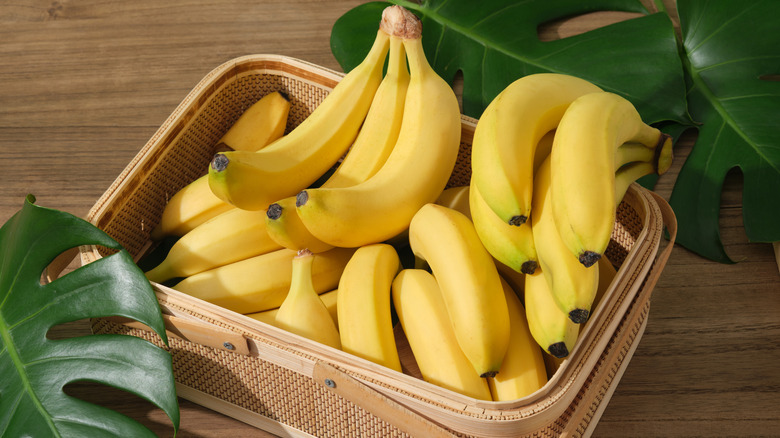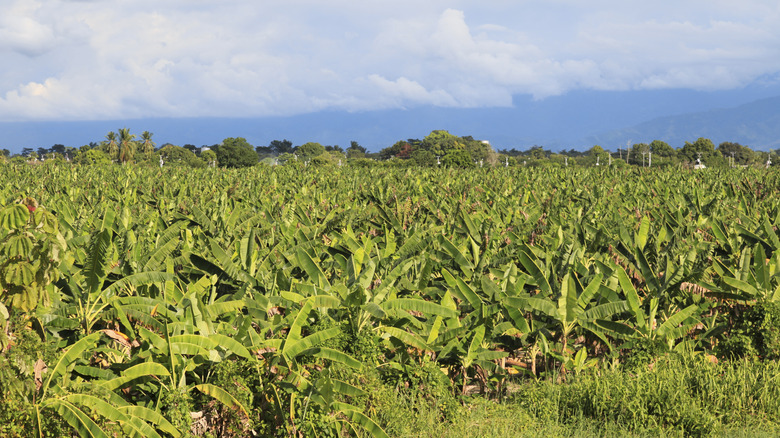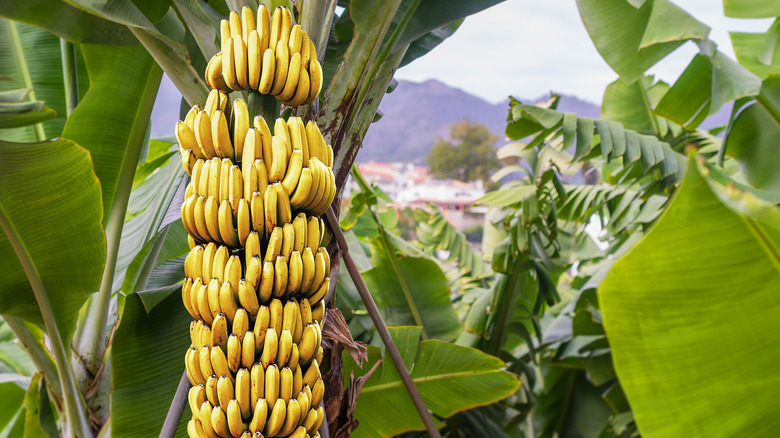Why Don't Bananas Have Seeds?
Did you know that bananas are actually berries? This begs the question: What is a berry, exactly? One common misconception is that berries have seeds, but surprisingly, that's not part of the criteria for berry classification. Indeed, bananas don't have seeds, but why? And how do they propagate without them? As it turns out, some varieties used to have seeds, but they were bred so that they no longer need them to reproduce — because bananas are cloned.
That's right: All modern commercial bananas are sterile. You'll find one with a vestigial seed or two — perhaps you've occasionally seen little black dots around the fruit's center — but those aren't about to produce anything except maybe hesitation. Banana trees aren't exactly trees, either; they're technically rhizomes, more closely related to ginger than apples. Bananas are the result of cloning, which involves reproducing the exact same plant without fertilization. While this is admittedly pretty cool, it's also a bad sign. The thing that makes bananas so prolific is also what might lead to their extinction.
The beginning, the end
Not only are they said to be the most popular fruit in the world, but eating bananas every day may benefit your overall health and nutrition. Sadly, however, we might see a day when tropical fruit is no longer commercially available. Bananas are believed to have first been propagated in the Kuk region of New Guinea around 8,000 B.C.E., but the fruit of ancient civilizations was very different from the kind sitting in your grocery store produce section, and yes, they most likely contained seeds.
The seedless banana variety we eat today is called Cavendish, named after William Cavendish, the 7th Duke of Devonshire. In the early 19th century, the duke inherited a few banana plants and farmed them in England. They soon became a cash crop. As it turns out, Cavendish bananas happen to be the most bland of the berry's variety — but sadly, the Panama disease epidemic of the late 19th century effectively wiped out the market-leading, ultra-flavorful Gros Michel (aka Big Mike) bananas by the 1930s. Now, Cavendish bananas are currently being threatened all over the world by a disease called Tropical Race Four (or TR4), which could see the extinction of bananas possibly in our lifetime.
The dangers of monoculture
Cloning is not unknown in the natural world; in fact, the term parthenocarpy describes fruiting without fertilization (as opposed to something that only happens in the lab). However, Cavendish bananas are exclusively cloned and are propagated asexually through grafting or the use of tissue cultures. Because they're all identical, commercial bananas are considered a monocrop. Because banana plantations only grow high concentrations of banana trees, that practice is known as a monoculture.
Monoculture isn't just bad for the fruits; while having no species diversity hurts its chances of surviving catastrophic diseases like TR4, it also attracts pests, damages the ecosystem, and deprives many pollinator species of needed safety and sustenance. A banana polyculture used to exist, but as seeds were bred out of the fruit, so was their biodiversity, and monoculture growing systems are more profitable. Now, monoculture crops like Cavendish are likely to go the way of Gros Michel and succumb to disease because most of their natural defenses have been bred or planted out.


